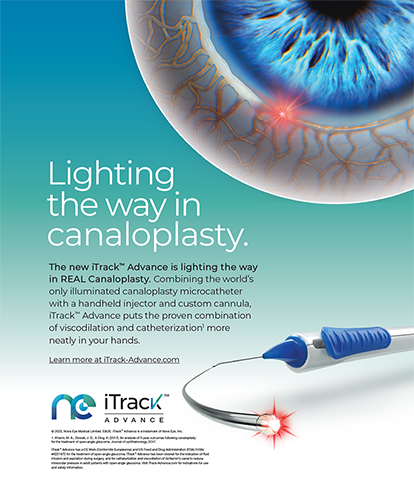
Astigmatism correction and patient satisfaction after cataract surgery are closely connected. Patients unable to see clearly at distance without glasses after cataract surgery tend to be underwhelmed as far as their satisfaction with surgery. Leaving astigmatism uncorrected in patients is the most common reason for this scenario.
EDUCATE PATIENTS, PLAN THE PROCEDURE
Because we want our patients to be thrilled with their results after surgery—and we know that if they need glasses to see at distance they likely won’t be—we try hard to give patients with visually significant astigmatism a clear understanding of the potential impact of their astigmatism on the results of surgery. Most patients have a poor or even no understanding of astigmatism, which often makes preoperative education during the consultation time-consuming. Nevertheless, it is crucial.
We acquire corneal topography for all surgery candidates, and I use these images and other visual aids to explain to patients what astigmatism is and make the issue clear to them. I want to avoid that feeling when patients realize postoperatively that they will need glasses and complain that, had they understood this, they would have done something different.
Once a patient has chosen to have his or her astigmatism corrected, the question is how to go about it. The determining factors include how much astigmatism is present and the direction of the axis. Topography, keratometry (K), and the total K measurements on the IOLMaster 700 (Carl Zeiss Meditec) are the metrics I rely on for planning treatment. Total K is the most important for magnitude, and topography from the Pentacam (Oculus Optikgeräte) is most important for axis. I use the Barrett Toric Calculator and the Tecnis lens calculator (Johnson & Johnson Vision) for IOL power calculations, with some adjustments based on personal experience.
SURGICAL PROCEDURES AND TOOLS
The tools at my disposal for astigmatism correction include incision placement, laser astigmatic keratotomy (AK), and toric IOL selection. For less than 0.50 D of cylinder, I try to place the incision on the steep axis when possible. For with-the-rule astigmatism with magnitude between 0.75 and 1.25 D, I use laser AKs, and anything above that I use a toric IOL. For against-the-rule astigmatism, 0.25 to 1.00 D is my range for laser AKs, and anything greater again gets a toric IOL.
Manual marks made at the slit lamp before surgery are used to guide placement of AKs. Placement of the IOL in the proper axis is facilitated by using the Callisto eye (Carl Zeiss Meditec). Although this system is reliable and accurate, I always do backup marking in case capture does not occur. I like to take a screenshot of the IOL lined up with the displayed axis at the end of the case.
Key points of surgical technique include removing all the OVD from behind the implant, not overinflating the eye, and making sure the wound is secure.
Treating residual astigmatism after implanting a toric IOL or creating AKs can be challenging. If the lens has rotated off axis to a degree that is affecting the outcome, I am quick to return to the OR to correct it. I have found that, even in long eyes, I do not need to use capsular tension rings to achieve stability, and simple repositioning of the lens corrects the problem 90% of the time. Because I have easy access to an excimer laser, I generally correct residual errors not related to axis location with the laser. It’s easier for the patient to accept the idea of doing a little fine-tuning with the laser rather than going back to the OR.
CONCLUSION
Aggressively attempting to correct astigmatism in cataract surgery patients has become a focus for me. At the very least, I want all my patients to feel good about their distance vision without glasses after cataract surgery. Astigmatism correction is an integral part of making that possible.
Find out what methods I rely on to place a toric IOL in the proper axis in the Table. Click here!




